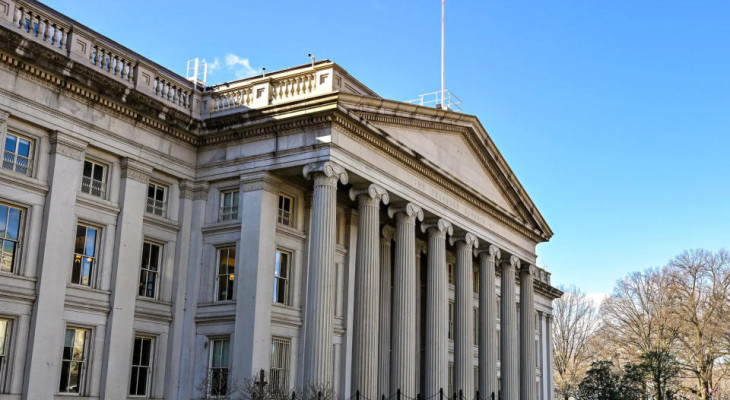Joe Biden gave up on reelection against Donald Trump
Sunday brings shockwaves to global politics when US President Joe Biden announced that he is not running for reelection. The incumbent…

US Debt Ceiling
Due to reaching its debt ceiling, the United States needs to borrow $1 trillion in order to stay out of default.
When President Biden signed legislation on Saturday allowing the Treasury Department, which was dangerously close to running out of cash, permission to borrow extra money to pay the nation’s debts, the United States narrowly escaped a default.
The treasury is currently beginning to increase its reserves, and the impending borrowing binge may result in issues that cause the economy to falter.
Several institutions have predicted that the government will borrow about $1 trillion by the end of September. Those ongoing borrowing habits will cause money from banks and other lenders to flow into treasury securities, depleting the financial system and exacerbating its negative effects.
A debt default would be disastrous for the economy, causing a recession and the loss of jobs. The treasury must entice investors to lend the government such big sums despite rising interest rates. Higher borrowing costs for the government also increase borrowing costs for banks, companies, and other borrowers given how many other financial assets are linked to the rate on treasuries, analysts have warned. This could have an effect similar to one or two quarter-point rate increases from the federal reserve.
Gennadiy Goldberg, an interest rate strategist at TD Securities, stated that the whole debt ceiling standoff was still the core source of the problem.
When the central bank meets the following week, some policymakers have said they might decide to hold off on hiking rates in order to evaluate how their actions have affected the economy thus far.
The Treasury might take exceptional measures to prevent default, or Congress could raise the debt ceiling.
Worries among investors and depositors about how increased interest rates have diminished the value of assets held at small and medium-sized banks, which first surfaced in the spring, may be made worse as a result.
The impacts of another Fed objective, the reduction in the size of its balance sheet, are likewise amplified by the flood of Treasury debt. The Fed has reduced the quantity of new Treasuries and other debt it purchases, allowing older debt to gradually mature while already burdening private investors with further debt. It’s challenging to envision Treasury leaving and and selling what could be $1 trillion of bonds and not have that have an impact on borrowing costs.
The Treasury Department’s general account’s cash balance dropped below $40 billion last week as lawmakers hurried to come to an agreement to raise the borrowing limit for the country. On Saturday, Mr. Biden authorised the suspension of the $31.4 trillion debt ceiling until January 2025.
Treasury Secretary Janet L. Yellen had been postponing a default for months by utilising accounting tricks known as extraordinary measures. Among them was the halting of fresh investments in the pension plans for government employees and postal workers.
It is virtually a straightforward accounting adjustment to restore those investments, but it is more difficult to replenish the government’s cash reserves. The Treasury Department stated on Wednesday that it aimed to borrow enough money by the end of June to replenish its cash account to $425 billion. “The supply floodgates are now open,” said Mark Cabana, an interest rate strategist at Bank of America.
According to a Treasury government official, the government carefully weighed investor demand and market capacity while deciding whether to issue debt. Treasury officials began asking influential market participants in April how much they believed the market could withstand if the debt-limit crisis was settled. This month, the Federal Reserve Bank of New York questioned major banks about their predictions for the future of bank reserves and borrowing from certain Fed facilities.
“The department had previously handled cases comparable to this,” an official stated. The Treasury Department boosted its cash stockpile over the summer, which contributed to factors that drained banking system reserves and upset the market’s plumbing, causing the Fed to intervene to avert a worse catastrophe. This is noteworthy after a bout of debt-limit squabbling in 2019.
The Fed established a programme for repurchase agreements, a type of financing in which Treasury debt was deposited as security, among other things. Although its deployment was generally considered to be a last choice in the business, that backstop might serve as a safety net for banks that are running low on capital due to lending to the government.
Advertisement